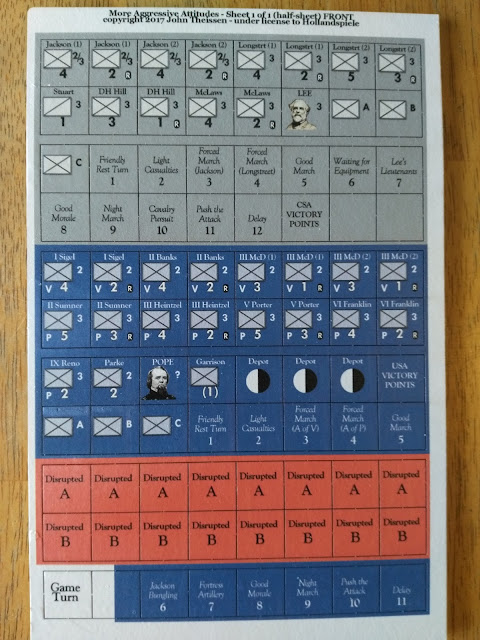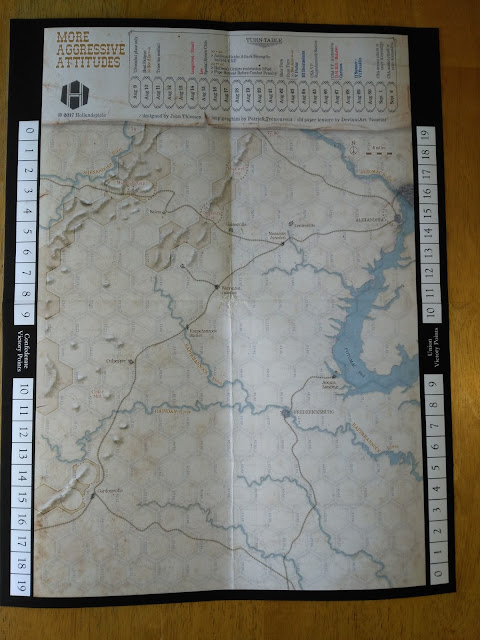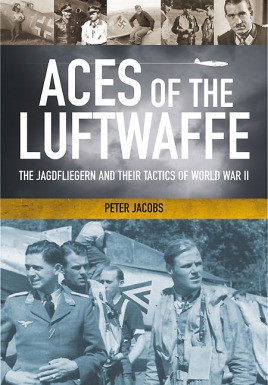German Heavy Fighting Vehicles of the Second World War by Kenneth W. Estes This book is only about the German heav...

For your Wargamer, Toy soldier collector, MiniFig collector, military history nut. Reviews, interviews, Model Making, AARs and books!
German Heavy Fighting Vehicles of The Second World War by Kenneth W. Estes
War of The Rats: Stalingrad by Russ Schulke of 626 Designs LLC "War of the Rats: Stalingrad” NEWS We recentl...

For your Wargamer, Toy soldier collector, MiniFig collector, military history nut. Reviews, interviews, Model Making, AARs and books!
War of The Rats: Stalingrad by Russ Schulke of 626 Designs LLC
Game map: 3 sheets 35"x 60" (Total size 102" x 60") 1" overlap per map. The map folds are strategically placed, and each sheet can be folded to the minimal size for most scenario requirements. Alternatively, you can back-fold and add a few more maps printed charts. The game comes with a complete set of hand-held aids, charts, and tables. This project was created with AutoCAD (85%) and Photoshop (15%).
Game map: Game Scale: Company/Platoon Hex scale: 300 meters
Waterloo The Truth at Last Why Napoleon Lost The Great Battle by Paul L. Dawson To merde or not t...

For your Wargamer, Toy soldier collector, MiniFig collector, military history nut. Reviews, interviews, Model Making, AARs and books!
Watrloo The Truth at Last by Paul L. Dawson
This book is large at roughly 500 pages, and it is jam packed with first person accounts of the battle. What makes this book different from so many others is that these accounts do not gel at all with the history as we have been told until now. We have been taught through word and screen that the Old Guard was destroyed by English troops. The author shows more than just a few accounts that say the Old Guard was actually destroyed by the Prussians. Another 'myth' the book tries to do away with is why the French attack was so delayed. We have been taught it was because of the condition of the ground that morning. There are many accounts and the author shows us that the French were just not ready to attack early. The author also questions if this army was one of the better ones that Napoleon commanded. This has been put forth in many written accounts of the battle.
Mr. Dawson backs up his assertions with a lot, and I mean a lot, of facts and figures. The book can stand on all of the points the author shows that can be backed up by figures etc. The only problem with these first hand accounts is what if they are not correct, or are remembered incorrectly?
This book is one that everyone should have in their library, whether they agree with all of its findings or not. It is good to have a book that makes us question what we have believed in for the past two hundred years. The only thing I can fault the book for is a total absence of maps. A map to show where the author believes the Old Guard was destroyed/surrendered would have helped the reader to understand what exactly, and how much, the author was trying to correct the historical record. Even with the lack of maps, it is still a great book for a reader to ponder over. Do yourself a favor and read the author's other books on the campaign.
Robert
Book: Waterloo: The Truth at Last
Author: Paul L. Dawson
Publisher: Frontline Books
Distributor: Casemate Publishers
Hitler's Secret Weapons by David Porter Readers who are looking for a story about the history of the Third Rei...

For your Wargamer, Toy soldier collector, MiniFig collector, military history nut. Reviews, interviews, Model Making, AARs and books!
Hitler's Secret Weapons by David Porter
CHARIOTS OF ROME from VICTORY POINT GAMES First there was Circus Maximus [Avalon Hill, 1979], then there was Circus Minimus [20...
For your Wargamer, Toy soldier collector, MiniFig collector, military history nut. Reviews, interviews, Model Making, AARs and books!
CHARIOTS OF ROME
Unlike the uber chart-heavy tables of Avalon Hill's game and a large record sheet for each player to log speed, damage etc., all this is handled very effectively by player boards [again shown above]. Each chariot in play has such a display. They are quite thin card stock, but work fine to chart endurance, rattled status, tactics and speed. These are all recorded on the various tracks with cardboard markers whose size and quality tend to mean that they aren't subject to problems of being displaced, but it can be very easy to forget which actions need a loss of endurance or increase in damage. This is especially true when the action hots up and chariots are vying for position.
That's a lot of potential harm coming your way! So, is there any way to mitigate it? First and foremost you can use Tactics points. For each Tactic point you pay, you draw one less Action card. The rules would have you draw all 7 cards and then return as many cards to the deck as Tactic points you spend. That process is carried out without revealing or knowing what is on the Action cards. A far simpler and quicker process which we've adopted is to pay the Tactics points and then draw the requisite number of cards. Continuing the example above, needing to draw 7 cards, you decide to pay 4 Tactics points and so draw only 3 cards.
How you execute these cards is an equally effective refinement to many race games. For each space you enter you reveal one of the cards and follow the symbols on the top line [appropriately labelled "corner" - sometimes "no effect" ensues at others loss of endurance or swerving or gaining a Rattle point [consider the latter to be a type of damage point, either directly to the chariot or to the charioteer's mental or physical state]. If you've drawn rather a lot of cards, you may even find yourself having to continue to play out the remaining ones as you start your movement on the next turn!
Adding a few other refinements to play are the Fate cards, Charioteer Skill cards and two dice. Starting with 4th Round of play, the first player to take their turn rolls the Fate die which provides a small bonus for all players or the draw of a Fate card. The other die in the game can be rolled for the cost of losing an Endurance point by each player on their turn to gain from 1 to 3 extra movement points.
The last item is the Chariot Skill cards - each player draws one at the beginning of the game to give an individual ability. This is the one and only feature I have some reservations about as the Skills do seem to vary considerably in the quality of their benefits. This is particularly true of the card that allows a Charioteer to look at the Initiative Deck and move one card to whichever place they like in the Deck - no surprise that the player with this card tends to place their card first in the Deck! More about that in the following view of game play.
So, how does it play? Well my view is that it depends quite a lot on how you play the game! My first experience with a large group of players was underwhelming. As mentioned above, one player drew the Skill card that allowed him to manipulate the Initiative Deck, placed himself first and romped home in that position!
However, there was a distinct lack of player interaction i.e. except for myself and one other player, virtually no one chose to whip or ram their opponents. Verdict by the group: too simple, unbalanced not a great deal of fun. My verdict - that's not how the game should be played. If the central mechanic of a game depends on Action cards for which three-quarters of the decisions involve whipping, ramming and actions that lead to Danger, then not taking actions that involve them is missing out on a major aspect of the game.
Boxing in opponents so that they are forced to overtake, whipping and ramming fairly frequently, focusing on not giving the lead player/s an easy ride produces a much more dynamic and exciting experience. Chariots/charioteers will fail to make it to the end of the race, their chariots left behind as debris and potential obstacles. The game becomes a real contest, the turn of an individual card becomes far more crucial at times. Tactics points rapidly get spent and become far more critical a need and all the elements of the game come in to play.
I've already praised the way cornering is dealt with. I'm equally in favour of this game's use of a randomly shuffled set of Initiative cards, one for each chariot, that not only determines the order in which chariots move, but as one card is revealed at a time means that there. So many race type games suffer from the leader-goes-first mechanic and should you decide that the power of the Charioteer Skill that would allow the owner of it always to go first is too much, then it's easy enough to house-rule a modification to how often it can be used - though my advice would be just gang up on said leader!
So, whip up your horses [and whip your opponents] - oh, and don't forget to point your chariot in the right direction!
As always thanks to Victory Point Games for providing a review copy.
Bloody Monday by Ventonuovo Games Bloody Monday, not a day in some insurrection against an invading power, or ...

For your Wargamer, Toy soldier collector, MiniFig collector, military history nut. Reviews, interviews, Model Making, AARs and books!
Bloody Monday by Ventonuovo Games
The game rules are longer and more involved than other block games that I have played. The rules take up eighteen pages, with the last three being optional rules. The game also treats leaders differently than most games. Leaders can be destroyed in this game, and one of the ways to win is to destroy the enemy Supreme Commander. I like that the game rules include a chance for leaders to be eliminated. The game itself is only four turns long. The turns are:
6:00-9:00
9:00-12:00
12:00-15:00
15:00-18:00
The other victory conditions are that you control all seven victory areas, or eliminate ten enemy blocks (Russian Militia, Jaegers, and Cossacks do not count toward destroyed units).
The units are divided into 'fast' and 'slow'. Fast units are Cavalry, Horse Artillery, Tactical Leaders, and Supreme Commanders. These all have a movement allowance of five. Slow units are infantry and Foot Artillery, and these have a movement allowance of three. As usual, the units have their current strength points at the top of the block in the 12:00 position. Losses to the unit will involve flipping the block counter-clockwise one side.
The sequence of play is:
1.Logistics phase (not on turn one)
2.Impulse Phase
A.Tactical Action
B.Initiative Action
C.Pass
3.Final Phase
In the Logistics Phase, both the players may call for reinforcements, restore artillery, tactical leaders and Combat Units.
During the Impulse Phase, players take turns performing single impulse actions (a tactical Action, a Pass, or a Initiative action). The Impulse Phase ends after two consecutive Passes.
During a Tactical action, which is the most common action undertaken during the game, the Phasing Player:
1.activates his Tactical Leaders
2.moves his Units
3.resolves battles
During the Initiative Action (which can only be done if the phasing player has and spends the initiative Disc) the Phasing Player may move his Units and resolve battles without activating any Tactical leader.
During a Pass, the Phasing Player may move only one of his units.
The Final Phase is just moving the Turn Track marker forward one space to the next turn.
Besides being able to be destroyed, the Supreme Commander's Unit has a few other interesting design choices. Both Supreme Commanders can only be activated a maximum of three times, and the actual block has to be turned over so that the enemy can see where it is located if it is activated. Without activating your Supreme Commander, a player cannot call for reinforcements or restore any unit's strength. The logistical value of each Supreme Commander unit is lessened by each time it is activated. The block is flipped one side each turn it is activated. Both Supreme Commanders start with four stars, and these can be used for three turns so that they will become two stars on the third activation. This is a large part of the game because the logistic value is totaled up between the stars on the Supreme Commander, and the number of victory areas its side is in charge of. So you will have to choose wisely when you want to use your Supreme Leader activations. The initiative disc is moved between each player by its use. On turn one, it starts with the French Player. If it is used by them to call for reinforcements etc. it is then expended, and handed to the Russian player until he uses it, and so on. After two consecutive passes, one for each player, that turn ends.
As was mentioned, this is a stand up brutal battle. The French player will have to batter and then pry the Russian player from the Raevsky Redoubt and the Fleches. This is not easy, and comes at a high price. As The Russian player, you will have to tenaciously defend and guess when to counterattack. Your job is made a little easier because of the straight forward nature of the French attack. However, you have to deal with the Grande Armee during one of its last hurrahs as a fighting force.
I have five boardgames and a few computer ones that deal with the Battle of Borodino. The design choices made in this game have made it a clear winner for me, and has been put on my favorites list. I can readily endorse this game to any gamer.
Robert
They just had a KS on their game 'Stalingrad Inferno on the Volga'. It has a huge map, but is playable in only 1-2 hours. It also has what they call an AI to be able to play either side in solitaire. I am very interested in the game's mechanics. Here is the webpage if you are interested also:
http://www.ventonuovo.net/games/stalingrad-inferno-on-the-volga
Rome, Blood & Politics by Gareth C. Sampson Murder and mayhem in the waning years of the Roman Republic; what ...

For your Wargamer, Toy soldier collector, MiniFig collector, military history nut. Reviews, interviews, Model Making, AARs and books!
Rome, Blood & Politics by Gareth Sampson
More Aggressive Attitudes by Hollandspiele Our review today is about this little known gem by Hollandspiele. Thi...

For your Wargamer, Toy soldier collector, MiniFig collector, military history nut. Reviews, interviews, Model Making, AARs and books!
More Aggressive Attitudes by Hollandspiele
 |
| Turn one |
A. To reflect Union command and control problems in the absence of the overall commander, Pope, the following rule is used:
If two or more US units (both of McDowell's units in the same hex are considered to be one unit for all purposes in this rule) are stacked in a hex and attempt to attack, they must roll for Attack Coordination. If a 1 or 2 is rolled, at least one US must attack, Union player's choice. After that, the Union player may continue to attack with one unit at a time or cancel any further attacks, at the US player's choice. If a 6 is rolled, the rightward CRT shift is ignored and not used.
If the leader Pope is stacked in a hex the above is negated. The units stacked with Pope may automatically attack with one combat strength.
B. To moderate Pope's leader rating, use the following:
Roll for Pope's Leadership rating as in the rules when required. Modify the results of a roll of 2-6 so that the indicated rating is used, but instead of the rating negating all others in the hex, that rating is averaged with all other ratings in the hex. Count Pope as one unit for the calculation. Example- Pope is stacked with Union Corps Reno and Sigel, and they participate in a combat. Roll for Pope's leadership. A 3 is rolled. Pope's rating is 1. Now calculate average leadership. 1+3+2 (Pope + Reno + Sigel) = 6 . Divide by 3 (three units) = average leader rating for this battle is 2.
If a 1 is rolled for Pope Leadership Rating, his overconfidence and unwillingness to accept intelligence reports give a result as the original rule. That is, the rating for the stack is 1."
Tally Ho by Minden Games Tally Ho by Gary Graber of Minden Games is another study in minimalism by Minden Gam...

For your Wargamer, Toy soldier collector, MiniFig collector, military history nut. Reviews, interviews, Model Making, AARs and books!
Tally Ho by Minden Games
 |
| Dogfight Display |
 |
| CRT |
On the first card draw no one has the advantage.
On the second card draw the Hurricane does, but fire is not allowed from the Spades to the Diamonds hex row. If the Hurricane were in the Hearts or Clubs hexes he could try for a hit.
On the next draw the Hurricane has pulled off a three and the MC200 a jack of Clubs. To check to if you can open a fire, an ace is equal to1 and and all numbered cards up to and including 10 are their stated number. A Jack, Queen, or King are all 0. So long as one number minus the other is more than 0 the plane with the advantage can open fire. The Hurricane rolls on the 3 column of the CRT, and rolls a 1 for no hit.
The MC200 now has the advantage, but cannot fire because the difference of the cards is -1.
The Hurricane now has the advantage, and can open fire because the difference of the cards is a +5. The Hurricane drew a 10 of Hearts, and the MC200 drew a 5 of Clubs. Rolling a 5 on the CRT the Hurricane gets 5 hits on the MC200, but also gets to roll on the critical hit table. The Hurricane rolls a 5 again for engine damage.
This reduces the hand/speed of the MC200 by 1. We could continue, but just as in real life over Malta the MC200 really stands no chance. It is destroyed two rounds later. The game is quick, fun, and easy to learn. As mentioned, you can add the optional and advanced rules to put more of a kick into the game.
Robert
Aces of The Luftwaffe The Jagdflieger In The Second World War by Peter Jacobs Adolf Galland, Werner Molders, ...

For your Wargamer, Toy soldier collector, MiniFig collector, military history nut. Reviews, interviews, Model Making, AARs and books!
Aces of The Luftwaffe by Peter Jacobs
The author does not get involved with the argument of the German fighter pilots' claims of 'kills'. He states his case in the introduction and then leaves the matter to the reader. If we take one fighter pilot and compare his 'kills' to his sorties, I believe it will clear up the issue. Erich 'bubi' Hartmann is credited with 352 'kills'. The number of sorties that he flew was 1,404. He was in air combat over 800 times. There were many instances where he notched up more than one 'kill' on a sortie. So roughly he is credited with one kill for every four sorties. The East front was an environment full of Soviet airplanes of all types. Also, as the writer points out, German fighter pilots flew until they were killed, wounded too much to fly, or the war ended. If the Allied pilots were given the same number of sorties and a rich target environment I believe they too would have tallied up impressive scores.
Mr. Jacobs was in the Royal Air Force for over thirty years. So if anyone is qualified to write this book, it is him. He manages to tell the story of the war, and weave in the different pilots' lives and actions into it. It is true they fought for a horrible cause, but many of the people we history lovers read about would be listed in that way also. I congratulate Mr. Jacobs for this excellent volume on the German Jagdflieger. It is a great book for the novice and the expert alike on German WW II fighter pilots. The book not only describes the day fighters, but also the Reich's night fighters.As the author points out, many of these men were in their very early twenties when the war took place. At the same time that many people are just finding their way in the world, these men were in a life and death struggle with other young men and women (at least on the Soviet side). The appendices list the top scorers and their medals.
Robert
Book: Aces of The Luftwaffe
Author: Peter Jacobs
Publisher: Frontline Books
Distributor: Casemate Publishers




























Follow Us